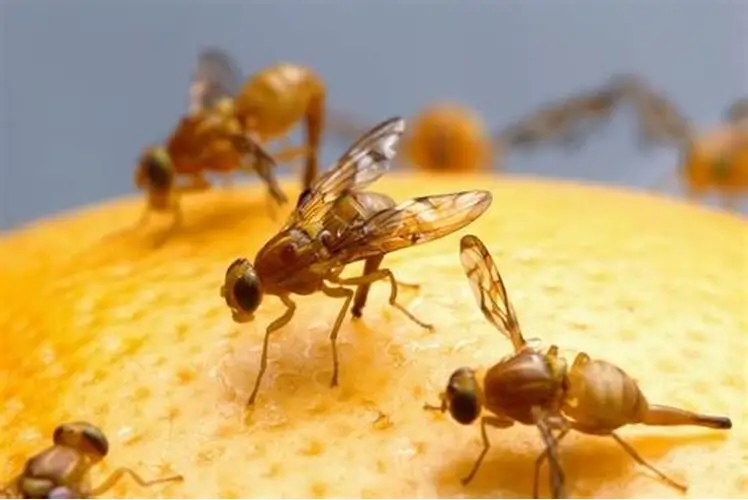Fruit flies, scientifically known as Drosophila melanogaster, are small, winged insects that thrive in environments rich in fermenting fruits and vegetables. They are typically about 1/8 inch long and are characterized by their tan or yellowish bodies and red eyes. Understanding their life cycle and behavior is crucial for effective control.
Life Cycle and Behavior
Fruit flies reproduce rapidly, with a female capable of laying up to 500 eggs in her lifetime. Eggs hatch within 24 to 30 hours, leading to a quick population explosion if not controlled. They are attracted to sugary substances and decaying organic matter, making kitchens a prime breeding ground.
Common Causes of Fruit Fly Infestations
Identifying the root cause of your fruit fly problem is essential for effective control. Here are 5 common causes of fruit fly infestations:
- Overripe or rotting fruit: Left unattended, these attract fruit flies.
- Spilled juice or alcohol: Residues can serve as breeding sites.
- Dirty dishes: Food particles on dishes left in the sink can lure them.
- Uncovered trash bins: Waste can provide an ideal environment for flies.
- Drains and compost bins: These can harbor breeding populations.
Effective Homemade Fruit Fly Traps
Homemade traps can effectively reduce fruit fly populations without resorting to chemicals. Here are 3 different homemade trap recipes:
1. Apple Cider Vinegar Trap
Apple cider vinegar is a natural attractant for fruit flies. To create this trap:
- Pour about an inch of apple cider vinegar into a jar.
- Add a few drops of dish soap to break the surface tension.
- Cover the jar with plastic wrap and poke small holes in it.
- Place the jar where fruit flies are prevalent.
2. Wine Trap
Fruit flies are also attracted to wine. This trap is simple:
- Pour a small amount of leftover wine into a bowl or jar.
- Cover it with plastic wrap and poke holes in the top.
- Set it out in infested areas.
3. Banana Peel Trap
Banana peels can also be effective:
- Place a banana peel in a jar.
- Cover with plastic wrap and poke holes.
- Leave it in areas where flies gather.
Step-by-Step Guide to Making a Fruit Fly Trap
Creating your own fruit fly trap is straightforward. Here’s a detailed step-by-step guide:
- Gather your materials: a jar, apple cider vinegar or wine, dish soap, and plastic wrap.
- Pour the attractant into the jar.
- Add dish soap to reduce surface tension.
- Cover the jar with plastic wrap and secure it with a rubber band.
- Poke small holes in the plastic wrap to allow flies to enter.
- Place the trap in areas where fruit flies are active.
Using Store-Bought Solutions for Fruit Fly Control
If homemade traps aren’t sufficient, consider using store-bought solutions. Here are a few options:
- Fruit fly traps: These are commercially available and often contain attractants.
- Insect sprays: Look for products specifically labeled for fruit flies.
- Sticky traps: These can be placed near fruit bowls or trash cans to catch flies.
Preventing Future Fruit Fly Infestations
Prevention is key to avoiding future infestations. Here are some tips for preventing future infestations:
- Store fruits and vegetables in the refrigerator.
- Seal trash bins and compost containers tightly.
- Regularly clean kitchen surfaces and dispose of food waste promptly.
- Use airtight containers for food storage.
- Keep drains clean and free from organic matter.
